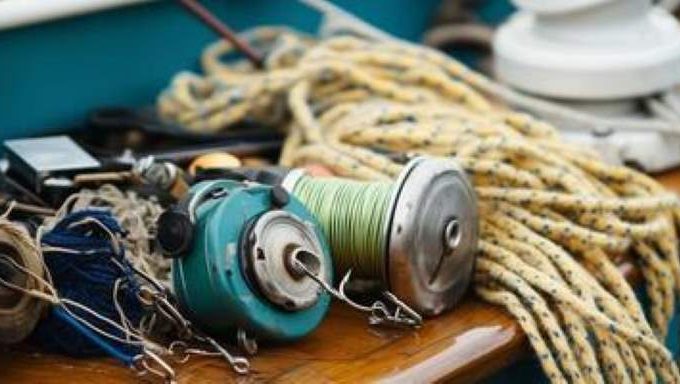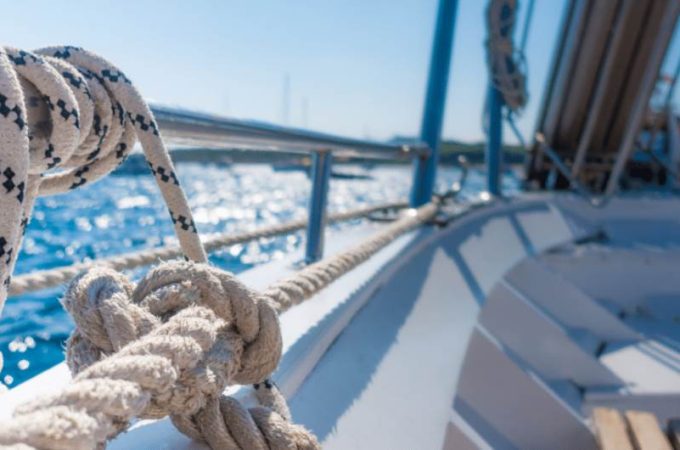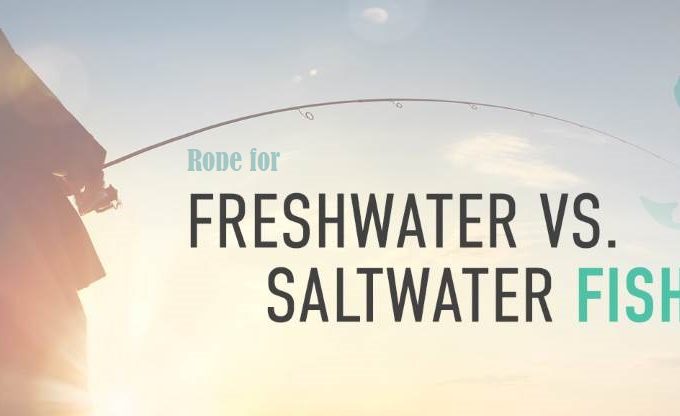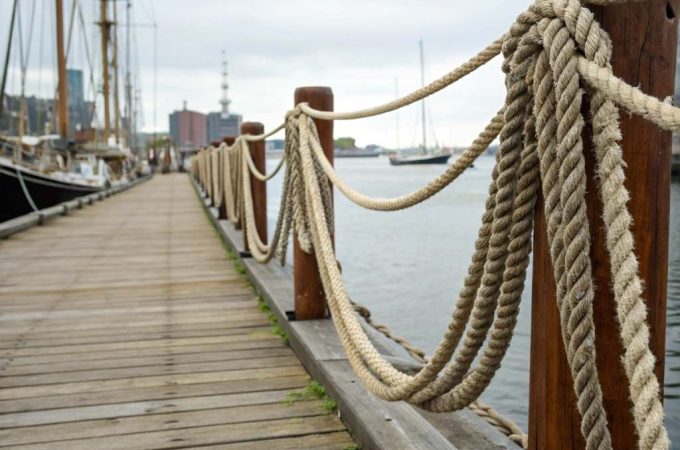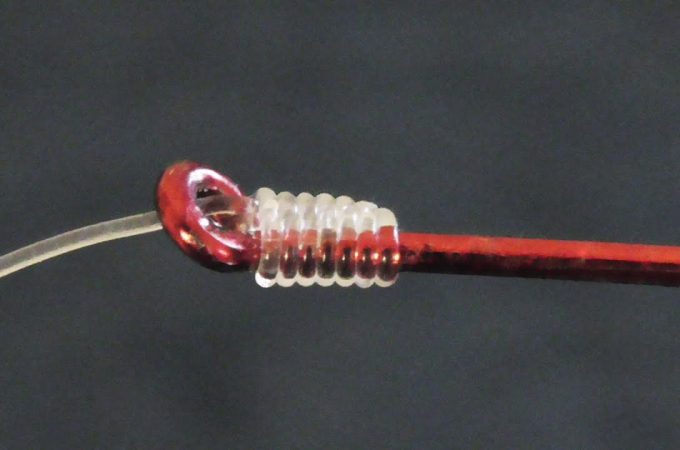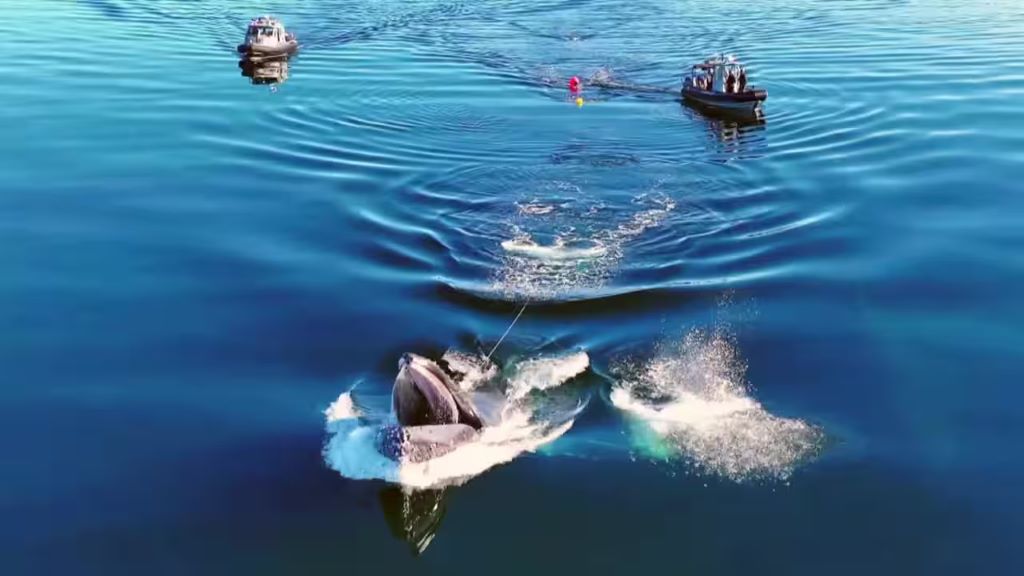
Fishing Rope And Safety: Secure Your Catch Smartly!
Ensure your safety while fishing by choosing the right rope and understanding its proper use. Regular checks and maintenance of your fishing rope can prevent accidents.
Contents at a Glance
ToggleSelecting appropriate fishing rope and prioritizing safety are crucial for every angler’s well-being and success. High-quality, durable fishing lines play a vital role in both the capture of fish and the avoidance of potential hazards. Anglers should be familiar with the various types of ropes available, such as braided, monofilament, and fluorocarbon, each offering different benefits depending on the fishing conditions.
A well-rounded introduction to fishing rope safety involves understanding these differences, recognizing signs of wear and tear, and learning about emergency procedures. By staying informed and prepared, anglers can ensure not only a productive outing but also a return to shore without incident. With this knowledge in hand, you can confidently tackle your next fishing adventure with an added layer of safety.
The Importance Of Durable Fishing Rope
Every angler knows the thrill of the catch! Durable fishing rope is a must-have for safety and success. It’s the silent partner in every fishing adventure. A strong rope can be the difference between keeping your catch and watching it swim away. Let’s dive into what makes a fishing rope reliable and why it’s crucial for every fishing trip.
Material Matters: Choosing Rope For Marine Use
Not all ropes are equal, especially in marine environments. The best fishing ropes handle wet conditions and resist wear. Here’s a quick guide:
- Nylon: Stretchy and shock-absorbent, perfect for anchoring.
- Polyester: Keeps strength when wet, great for mooring lines.
- Polypropylene: Floats on water, ideal for buoy lines.
Selecting the right material ensures your rope won’t fail when it’s most needed.
Strength And Flexibility: Key Properties For Fishing Rope
A fishing rope must withstand heavy loads and harsh conditions. Seek out ropes with the following characteristics:
| Tensile Strength | Environmental Resistance | Elasticity |
|---|---|---|
| High enough to handle big catches | Resists UV rays, saltwater, and chemicals | Enough give to absorb sudden pulls |
Strength and flexibility keep ropes from snapping or causing injuries.
Remember these tips for a safe and successful fishing experience. Your rope is your link to the deep, treat it well!
Types Of Knots And Their Purposes
Fishing requires not only patience and skill but also a solid knowledge of knots. Knots ensure that your fishing line holds strong under tension. They are your silent partners in securing a good catch. Understanding the different types of knots and their specific uses can mean the difference between a trophy fish and the one that got away. Let’s cast a line into the world of angling knots.
Basic Knots Every Angler Should Master
Mastering a few basic knots sets the foundation for a successful fishing trip. Start with these knots to secure your gear and catch:
- Improved Clinch Knot: Ideal for attaching hooks, lures, or swivels to your line.
- Palomar Knot: Known for its strength, it’s perfect for tying line to a hook.
- Surgeon’s Knot: Great for connecting two lines of different thicknesses.
- Uni Knot: Versatile for attaching terminal tackle; can also join lines.
Specialized Knots For Secure Fishing
Some scenarios call for specialized knots. These provide extra security and are tailor-made for specific fishing situations:
- Blood Knot: Used for joining two pieces of fishing line together.
- Double Surgeon’s Loop: Creates a strong loop at the end of your line.
- Albright Knot: Perfect for connecting lines of different materials.
- Snell Knot: Secures a line to the shank of a hook.
Best Practices For Rope Maintenance
Maintaining your fishing rope is crucial for safety and longevity. A well-kept rope can save lives and money. Follow these best practices to ensure your rope stays in the best condition.
Cleaning And Storage Tips To Prolong Rope Life
Keep your rope clean to avoid wear and tear. Dirt can damage the fibers, reducing the rope’s life. Follow these simple cleaning and storage tips:
- Rinse ropes with fresh water after use.
- Use mild soap to remove stubborn grime.
- Let ropes dry completely before storing.
- Store ropes in a cool, dry place.
- Avoid direct sunlight when storing ropes.
- Do not store ropes in tight coils.
Proper storage is as important as cleaning. It prevents kinks and ensures the rope stays strong and flexible. Use bags or boxes to protect ropes from pests and chemicals.
Regular Inspection: Preventing Rope Deterioration
Regular inspection spots early signs of wear. It helps to address issues before they cause failure. Inspect your rope with these steps:
- Look for frays, cuts, or signs of abrasion.
- Feel for stiff sections that might suggest rope damage.
- Check for discoloration indicating UV or chemical damage.
- Ensure the rope’s core is not exposed.
- Tag ropes with the date of first use and inspect regularly.
Create a checklist to record your inspections. Replace ropes if you find serious damage. A good rule of thumb is to retire any rope that raises concern. Your safety depends on it.
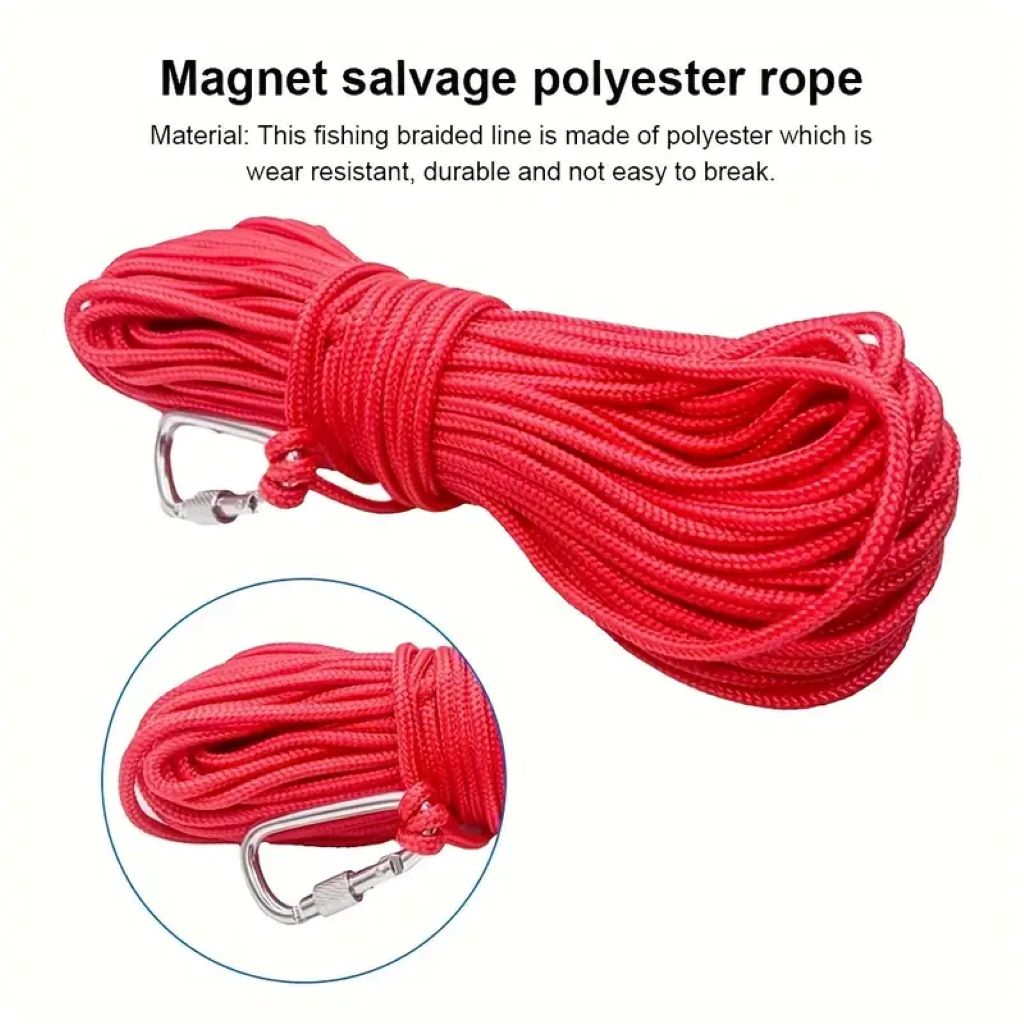
Essential Safety Measures When Handling Ropes
‘Essential Safety Measures When Handling Ropes’ are vital for every angler. The critical role ropes play on a fishing trip is clear. Ensuring safety is paramount. This section will cover key tips to keep anglers safe.
Minimizing The Risk Of Injuries
Injuries can turn a relaxing day of fishing into a nightmare. Prevent accidents with proper rope handling habits.
- Always inspect ropes for frays or signs of damage before use.
- Wear gloves to protect hands from cuts and abrasions.
- Keep ropes coiled when not in use to avoid tripping hazards.
- Ensure ropes are dry and free from entanglements.
- Stay focused and alert while casting or pulling ropes.
Proper Techniques For Safe Rope Management
Managing ropes effectively requires skill and attention to detail. Follow these techniques:
| Technique | Description |
|---|---|
| Coiling | Create neat loops for storage, reducing the risk of tangles. |
| Knotting | Learn and apply proper knots for securing gear and catches. |
| Cleaning | Rinse ropes in fresh water after use to prevent degradation. |
| Storage | Store ropes in a cool, dry place away from direct sunlight. |
In practice, these measures ensure a safer fishing experience. Mastery in safe rope management is vital. It protects both the angler and their equipment.
Maximizing Your Catch: Smart Rope Usage
Unlock the full potential of your fishing expeditions with smart rope usage. Intertwining skill with the right equipment, experienced anglers know that the rope can be the lifeline between a modest haul and an impressive catch. Let’s delve into how using your rope wisely can significantly enhance your angling success.
Impact Of Rope Selection On Catching Efficiency
Choosing the correct rope for fishing directly affects your ability to land fish. Various factors come into play:
- Material: The makeup of the rope can impact durability and flexibility at sea.
- Diameter: Thicker ropes may withstand more force, but sleeker lines can be less visible to fish.
- Length: Ensure your rope is long enough to reach the depths where fish thrive.
- Color: Certain hues blend in with the marine environment, creating a stealthier approach.
Synchronizing the right type with the intended fishing technique can be crucial. An incorrect choice might lead to missed opportunities and can even pose safety risks.
Advanced Techniques For Experienced Anglers
For those with mastered skills, advanced rope techniques can optimize catches. Here are specialized maneuvers:
- Knot expertise: Knowing a variety of knots can secure bait and tackle effectively.
- Rope lay: How ropes are coiled and stored can prevent tangles and ensure quick deployment.
- Jigging: Mastering the rhythmic manipulation of the rope can mimic prey movements, attracting fish.
- Drift lines: Proficiency in handling ropes to drift baits can lead to successful catches in deeper waters.
Refining these skills takes practice but is worth the investment. The right technique paired with a good knowledge of ropes can mean the difference between a good day and a great day on the water.
The Role Of Rope In Sustainable Fishing
Sustainable fishing preserves marine life and the environment. Ropes play a crucial part in this mission. They can last long and cause less harm. This section will dive into how fishing ropes can enhance sustainability.
Ensuring Eco-friendliness In Rope Production
- Ropes made from recycled materials help reduce waste.
- Biodegradable options break down naturally, preventing pollution.
- Manufacturers can use solar or wind energy to produce ropes.
- Eco-friendly certifications inform buyers about responsible choices.
Choosing the right materials and methods is vital. Producers should pick materials that don’t harm wildlife. They should avoid toxic chemicals that can leak into the water. Factories must control their carbon footprint to protect the planet.
Adapting Fishing Practices For Conservation
Every angler can contribute to ocean conservation. Using ropes correctly is a start. The tables below show best practices for sustainable fishing.
| Action | Benefit |
|---|---|
| Using ropes with minimal drag | Reduces fuel consumption |
| Selecting the right rope length | Avoids seabed damage |
| Regular rope maintenance | Extends lifespan, reducing waste |
Anglers should avoid leaving ropes in the water, which can entangle sea life. Rope sharing programs can also reduce the number of ropes needed.
By taking these steps, fishers ensure that their love for the sport also respects and protects nature. Everyone can make a difference for healthy oceans and sustainable future fishing adventures.
Selecting The Right Fishing Rope For Different Environments
Choosing the right fishing rope is crucial for any angler’s toolkit. Whether you’re casting lines in a tranquil lake or braving the mighty ocean, your rope needs to match the environment. Let’s dive into the key considerations for selecting the optimal rope to ensure your safety and success in different fishing scenarios.
Freshwater Vs. Saltwater: Rope Characteristics
Not all ropes are equal when facing different water types. The rope for freshwater and saltwater environments varies significantly.
In freshwater, ropes endure less corrosive conditions. Choose ropes that offer flexibility and knot retention. Durability is key, but heavy-duty resistance to elements is less critical.
For saltwater fishing, your rope must withstand harsh marine conditions. Look for ropes with anti-corrosive properties, UV resistance, and strength to combat the rigorous sea.
| Environment | Rope Characteristics |
|---|---|
| Freshwater | Flexibility, Knot Retention, Durability |
| Saltwater | Corrosion Resistance, UV Protection, High Tensile Strength |
Dealing With Extreme Weather Conditions
Extreme weather demands ropes that can brave the elements.
- Synthetic fibers like nylon and polyester offer impressive resilience against extreme temperatures and moisture.
- Choose ropes with coatings for extra protection against freezing conditions or scorching sun.
- For high winds or storms, go for ropes with greater diameter and enhanced strength.
Remember: Your safety depends on the rope’s integrity under stress. Always check for wear and replace ropes as needed.
Investment Vs. Expense: The Cost Of Quality Fishing Rope
Fishing is more than a hobby; it’s an adventure. Choosing the right gear is crucial. Many anglers debate the value of spending on quality fishing rope. Is it an expense or an investment? The answer lies in safety, performance, and long-term gain. Let’s look into why a premium fishing rope can make a difference.
Balancing Budget And Performance
Fishing ropes come in varied prices. High-quality ropes often cost more upfront. But, they deliver in performance and safety. Cheap ropes might save a few dollars now. Yet, they can break or fray easily. This can cause trouble on your fishing trips. Think of quality rope as a shield. It protects your catch, your gear, and you. Aim to balance your budget with the need for a rope that won’t let you down.
- Check for abrasion resistance – It prevents the rope from wearing down quickly.
- Review breaking strength – Ensure it can handle the weight of your catch.
- Assess flexibility and handling – A good rope ties knots well and resists kinking.
- Consider water absorption – Look for quick-dry capabilities to avoid a heavy, waterlogged rope.
Long-term Benefits Of Investing In Quality Rope
A quality fishing rope lasts longer. It’s that simple. It withstands the harsh marine environment. It resists saltwater, UV rays, and rough use. This means less frequent replacements. See the difference in how a premium rope stretches your dollar.
| Quality Rope | Cheap Rope |
|---|---|
| Durability – Handles heavy loads without fraying | Wears out quickly |
| Safety – Less likely to snap and cause injuries | High risk of breaking |
| Cost Over Time – Buys less often | Frequent replacements needed |
Don’t overlook the environmental angle. A durable rope means less waste. It’s better for the planet. Your investment in quality fishing rope not only secures your hobby but also contributes to sustainable fishing practices.
- Choose a rope designed for longevity.
- Weigh the initial investment against the lifespan of the product.
- Factor in potential risks of gear failure.
- Remember, superior ropes require less frequent replacement.
Investing in quality fishing rope is smart. It is not just spending money. It’s about valuing your safety and fishing success. Make an informed choice. The right rope will serve you well on many memorable trips.
Related: How to Use Long Line Fishing Rope
Advancements In Fishing Rope Technology
Anglers around the world are witnessing a revolution in fishing gear. Advancements in Fishing Rope Technology have transformed how we approach the waters. The right rope can withstand harsh conditions, resist wear and tear, and improve overall safety. It’s a pivotal tool in every angler’s arsenal.
Innovative Materials Enhancing Rope Performance
The development of new materials has significantly improved fishing ropes. Ultra-strong fibers now make ropes lighter and more durable.
- Dyneema and Spectra – offer high strength with minimal weight.
- Nylon – stretches to absorb shocks, reducing the risk of snap-backs.
- Polypropylene – stays afloat, which is ideal for water-based activities.
These materials are also designed to resist harsh marine environments, such as saltwater and UV radiation.
How Technology Is Shaping The Future Of Fishing
Technology doesn’t just stop with materials. Intelligent designs and manufacturing techniques are setting a new safety standard. Ropes with built-in sensors monitor wear and tear, signaling when it’s time for a replacement.
| Feature | Benefit |
|---|---|
| Braided Core | Increases strength and reduces stretch |
| Reflective Strands | Enhances visibility for night-time fishing |
| Color Coding | Simplifies rope length measurement |
With these advancements, the future of fishing promises greater efficiency and unparalleled safety for all anglers.
The Art Of Coil And Stow: Rope Management Techniques
Effective rope management is crucial on the water. It ensures safety and avoids tangles. Anglers often overlook this skill. Managing ropes properly can save time and prevent accidents. Learn to master the art of coiling and stowing your fishing rope. Doing it right increases the lifespan of your gear. It also keeps your deck safe and ready for action.
Effective Coiling Methods For Quick Deployment
Coiling your rope correctly is the first step towards a successful fishing trip. Follow these steps for a coil that’s easy to handle and quick to deploy:
- Start by laying out the rope straight without any twists.
- Grab the rope at one end and begin forming loose, even coils.
- Ensure each coil is about an arm’s length for uniformity.
- When you reach the end, wrap the remaining rope around the coil’s middle.
- Secure the wrapped rope with a simple overhand knot.
This method keeps your rope tangle-free and ready to use. Proper coiling also prevents potential hazards on deck.
Stowage Solutions For Clutter-free Deck Space
Storing your rope neatly is as important as coiling it effectively. Ensure your fishing deck is safe and clutter-free with these stowage solutions:
- Mountable Rope Bags: They easily attach to your boat’s hardware.
- echo htmlspecialchars(“Rope Cleats:”); ? A classic solution for securing coiled ropes in place.
- Storage Tubes: Protect your ropes from the elements.
Choose the right stowage according to your deck space. Regularly inspect these areas to ensure they remain efficient and safe for use.
Maintaining an organized fishing environment avoids accidents. It also ensures maximum performance and safety. Anglers of all levels benefit from practicing these techniques.
Frequently Asked Questions Of Fishing Rope And Safety: Essential Tips For Every Angler
What Are Five Safety Practices You Should Always Follow While Fishing?
1. Always wear a life jacket for protection on the water. 2. Check weather conditions before departing. 3. Use the buddy system, never fish alone. 4. Handle bait and hooks with caution to avoid injuries. 5. Respect local wildlife and follow fishing regulations.
What Essentials Do You Need For Fishing?
Essentials for fishing include a rod and reel, tackle like hooks and lures, bait, a fishing line, pliers, and a tackle box. Always bring a valid fishing license and sun protection.
How Can I Be A Better Angler?
Improve your angling skills by practicing regularly, studying fish behavior, using the right gear, learning from experienced fishermen, and remaining patient during each fishing trip.
How To Safely Go Fishing?
Check the weather forecast before planning your fishing trip. Always wear a life jacket when on a boat. Bring a first aid kit for emergencies. Use the proper gear for your target fish species. Tell someone your fishing location and expected return time.
Conclusion
As anglers, prioritizing safety through proper fishing rope use is crucial. Embracing these essential tips can mitigate risks, ensuring enjoyable and secure adventures. Remember, consistent practice leads to mastery. Tie your knots with confidence; cast your line with care. Let’s all fish smart and return home safely, every time.

